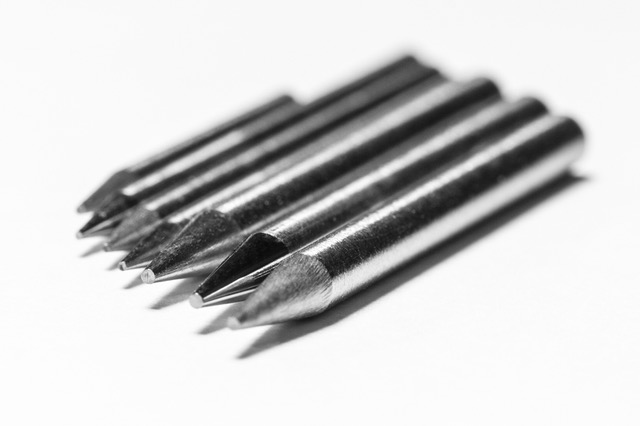
Tungsten inert gas (TIG) welding, otherwise known as gas tungsten arc welding (GTAW), is known for producing a clean and precise weld, and tungsten electrodes play a central role in it. From providing excellent thermal conductivity to ensuring precision arc control, using tungsten electrodes adds to the various benefits of TIG welding. Thus, it is important that the TIG tungsten size be selected carefully to add to the quality of the weld.
This article will discuss the different selection criteria for TIG tungsten electrodes.
TIG Tungsten Size Selection Criteria
There are many factors that affect the choice of the right tungsten size when TIG welding—the weld amperages, material thickness, and tungsten type, to name a few.
- Amperage: High amperage corresponds to the need for a larger tungsten diameter to handle the high heat and current level. A larger tungsten size means a wider area to dissipate heat and prevent issues like overheating and ensure arc stability.
- Material thickness: A general rule of thumb is that the TIG tungsten size should roughly be slightly smaller than the thickness of the material being welded to ensure proper heat input and adequate weld penetration.
- Tungsten type: Different tungsten types have different current-carrying capacities. For example, pure tungsten has a low current carrying capacity (typically up to 150 amps) compared to thoriated (≈ 300 amps) or ceriated (≈ 200 amps) tungsten. The size of the tungsten electrode must, thus, be based on the choice of tungsten electrode type.
The table below is the recommended TIG tungsten size for welding material of a wide range of thicknesses.
|
TIG Tungsten Size |
||
|
Tungsten Diameter (mm) |
Material Thickness (mm) |
Amperage (Amps) |
|
1.6 |
Up to 0.8 |
< 50A |
|
2.4 |
0.8 to 3.2 |
50 – 150A |
|
3.2 |
3.2 to 6.4 |
150 – 300A |
|
4.0 |
6.4 to 9.5 |
300 – 400A |
|
4.8 |
9.5 to 12.7 |
400 – 500A |
|
6.4 |
12.7 to 19.1 |
> 500A |
These GTAW torch parts are common across most types of GTAW welding machines, with the differences being in how these elements are adapted to different roles. Narrow groove GTAW is meant for big bore pipe welding and similarly heavy-duty tasks which require a lot of heat and steady current flow. Narrow groove tungsten electrodes incorporate what is effectively a collet into the electrode itself to ensure an even flow of current and heat into the electrode to help keep the arc and weld fusion symmetrical. Other heavy-duty GTAW torches are water-cooled to deal with excess heat. This is accomplished by modifying the collet body into a coolant sleeve that transfers heat from the collet and the tungsten it contains. Although somewhat unnervingly, these modified collet bodies retain their job of ensuring the collet receives enough current and frequently use the same lead for the current input and the coolant outflow or inflow.
The key takeaway from these GTAW torch parts is their commonality of function between different types of GTAW torches. This includes automated or semi-automated GTAW torch parts. However, these parts’ size, position, and functionality can be substantially altered. Although very different, they are still recognizable and performing what are recognizably the same roles they usually do.
Orbital Weld Head GTAW Torch Parts
One of the most surprising things to welders who have performed manual GTAW welding is how recognizable the components of most automated orbital GTAW weld heads are. Ceramic nozzles are prominent features of most of these weld head types. The exception is closed weld heads used in autogenous welding. This is because the body of the weld head effectively acts as a gas nozzle that surrounds the workpiece and the joint with shielding gas. The other familiar GTAW torch parts are still present and still recognizable.
In larger models meant for interior diameter welding or cladding, things are even more immediately recognizable as GTAW torch parts are mounted in an unusual configuration on machinery that allows them to be mobile and operate as directed via a weld parameter that is input through a power supply. This illustrates what is most likely the most significant difference between GTAW torch parts made for manual welding and those meant for automated processes. Automated GTAW torch parts like those meant for orbital welding are part of an integrated system. So while an operator can switch out all manual GTAW torch parts on a whim, automated or semi-automated systems like orbital welders need to account for these differences in the welding parameters, and need to use GTAW torch parts from the manufacturer to ensure their suitability.
Arc Machines, Inc. has been leading the welding industry with high-quality orbital welding solutions that provide reliable and consistent outcomes. For inquiries regarding products, contact sales@arcmachines.com. For service inquiries, such as how to select the right TIG tungsten size, contact service@arcmachines.com. Arc Machines welcomes the opportunity to discuss your specific needs. Contact us to arrange a meeting.




